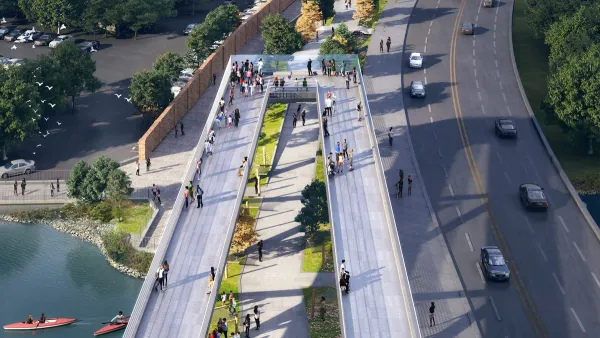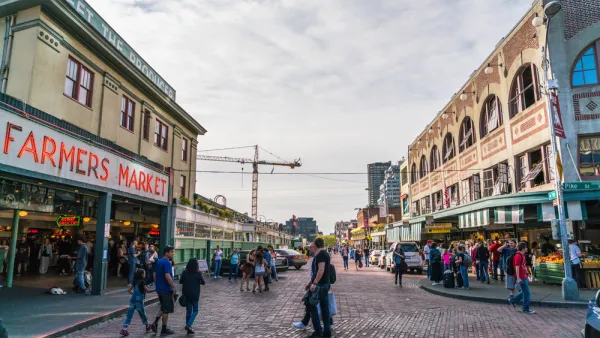A series of articles traces the history and policies behind Washington, D.C.’s efforts to promote equitable transit-oriented development.

In one part of a Greater Greater Washington series that explores the history of transit-oriented development (TOD) in the Washington, D.C. region, George Kevin Jordan outlines the ways that TOD can perpetuate existing inequities. “Today, with unaffordability and displacement in many cities at a crisis level, policymakers and activists are wondering how to ensure the benefits of TOD are more equitably distributed.”
Jordan points to changes that occurred under the administration of Mayor Anthony Williams, who took office in 1999 and “was laser-focused on bringing the city back to its former glory by building back trust, stability, and reliability within government.” As part of his plan, Williams strove to bring real estate investors back to the District and build better transit. “The District’s transformation into an in-demand city had ripple effects on many different types of growth in the region, including transit-oriented development.”
As walkable, transit-oriented neighborhoods became more desirable, housing costs rose and older residents were pushed out. “Between 2000 and 2013, about 40 percent of the city’s lower-income neighborhoods experienced gentrification, according to a 2019 study by the National Community Reinvestment Coalition.” The same report claims that more than 20,000 Black residents were displaced during that time. “Meanwhile, not only were residents living East of the Anacostia River not seeing much TOD, they were also dealing with disproportionate social and economic issues,” creating “an uneven set of opportunities for families and businesses.”
The next article in the series will highlight Arlington, “one of the pioneers in TOD, and how its success has complicated and informed the work to achieve equitable transit-oriented development.”
FULL STORY: Understanding why the region grapples with unequal access to TOD

National Parks Layoffs Will Cause Communities to Lose Billions
Thousands of essential park workers were laid off this week, just before the busy spring break season.

Retro-silient?: America’s First “Eco-burb,” The Woodlands Turns 50
A master-planned community north of Houston offers lessons on green infrastructure and resilient design, but falls short of its founder’s lofty affordability and walkability goals.

Delivering for America Plan Will Downgrade Mail Service in at Least 49.5 Percent of Zip Codes
Republican and Democrat lawmakers criticize the plan for its disproportionate negative impact on rural communities.

Test News Post 1
This is a summary

Test News Headline 46
Test for the image on the front page.

Balancing Bombs and Butterflies: How the National Guard Protects a Rare Species
The National Guard at Fort Indiantown Gap uses GIS technology and land management strategies to balance military training with conservation efforts, ensuring the survival of the rare eastern regal fritillary butterfly.
Urban Design for Planners 1: Software Tools
This six-course series explores essential urban design concepts using open source software and equips planners with the tools they need to participate fully in the urban design process.
Planning for Universal Design
Learn the tools for implementing Universal Design in planning regulations.
EMC Planning Group, Inc.
Planetizen
Planetizen
Mpact (formerly Rail~Volution)
Great Falls Development Authority, Inc.
HUDs Office of Policy Development and Research
NYU Wagner Graduate School of Public Service





























